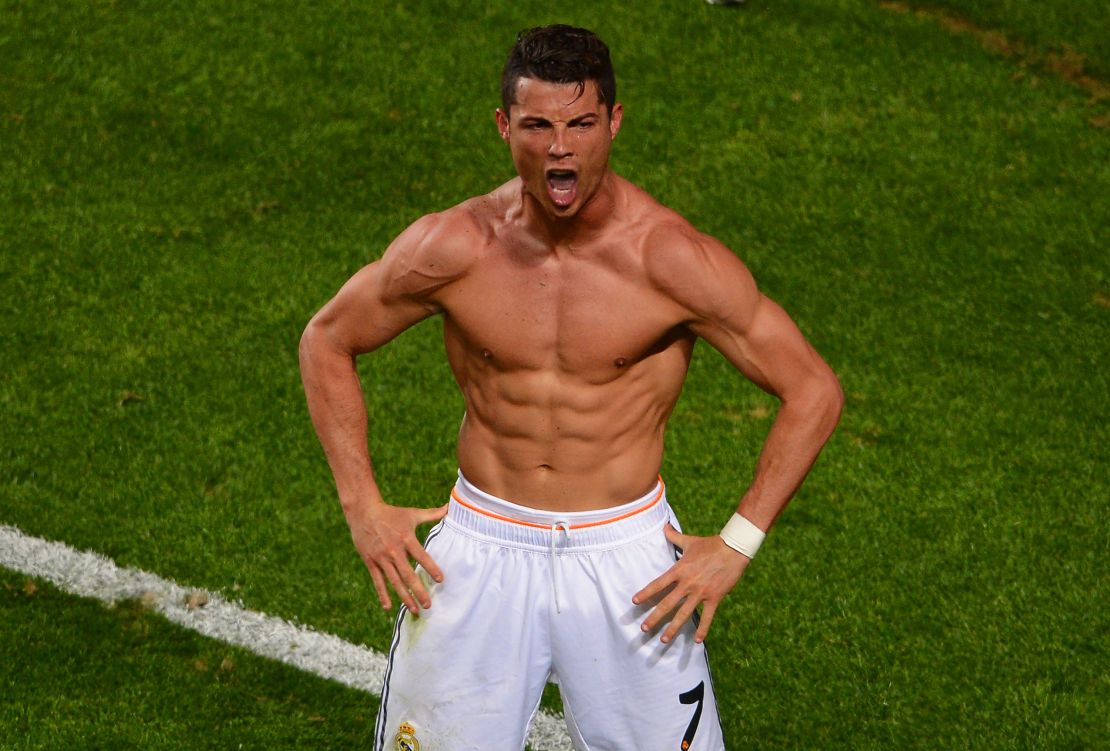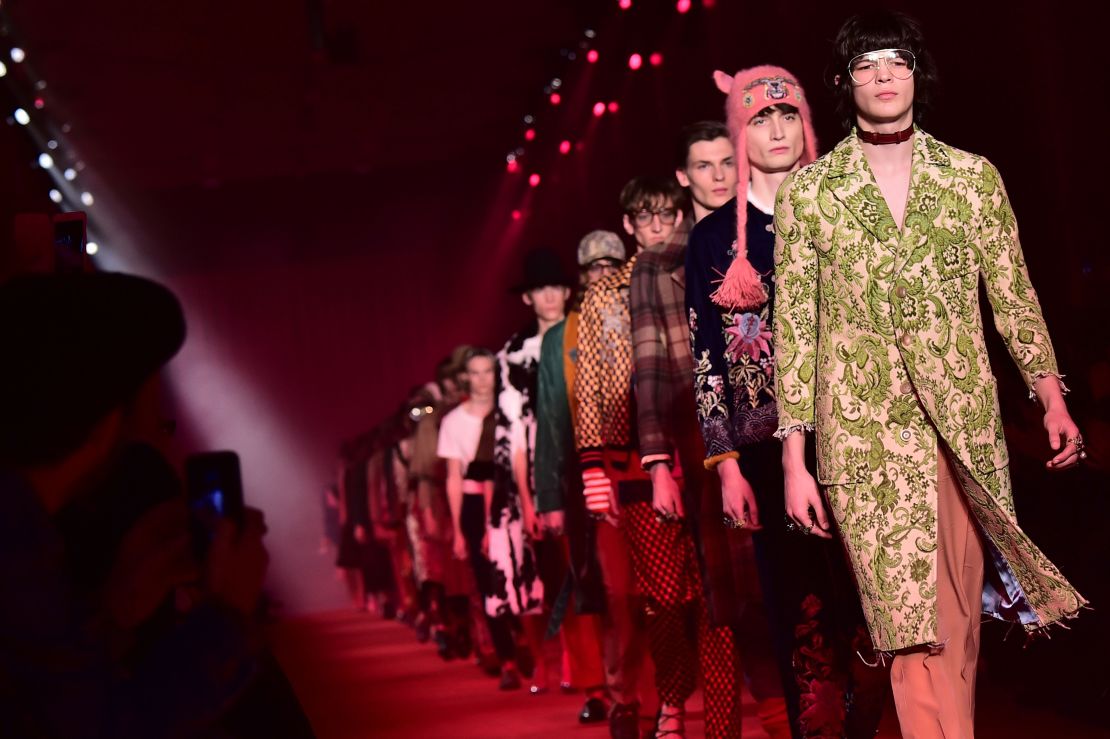Editor’s Note: Clive Martin is a London-based journalist. The views expressed here are the author’s own.
Masculinity has always been a shifting concept. The history of man is littered with examples of provocateurs and puritans who have fought a seemingly endless battle over what it is to be one.
The warrior pharaohs of Ancient Egypt wore makeup long before it was dismissed as only for women, while in the kingdoms of Greece and Rome it was not only acceptable, but commanding to have sex with your male subjects, before early Christian rulers came and condemned sodomy as an outrage and an offense punishable by death.
The medieval era took the model of masculinity back towards basic, chivalric, Christian values, before the likes of Byron and Brummell shattered these ideas with the rise of the dandy. David Bowie might have shocked in the 1970s with his face powder and effeminate posturing, but in Regency-era England, he could’ve passed as an esteemed member of society.
Recently, the tall, strong, short-haired, hard-working heterosexual has been the norm of masculinity, but once more that is changing.
Looking at pop culture, it’s clear to see that gender is a hot topic right now. Our perceptions of what gender means are splintering, and the conventions around how men and women must look or behave are being challenged.
Refashioning gender
Fashion has reacted to these changes more obviously than any other industry. There is still a long way to go in terms of reaching total acceptance and fluidity, but the old constructions of womenswear and menswear are starting to look somewhat dated, with an increasing amount of unisex collections on the catwalk, and models from across the gender spectrum wearing whatever happens to look good on them.
At the latest London Fashion Week Men’s, now in its fifth year, the trend for lithe, young pretty boys in extravagant garments shows no signs of abating. Charles Jeffrey, a designer whose work is grounded in the androgynous club scene he frequents, was one of the hottest tickets this season, whereas a few years ago he might have just been a niche also-ran.
Scenes from London Fashion Week Men's Spring-Summer 2018
Even Cottweiler – one of the more traditionally masculine brands, known for their reimagining of sportswear – put models in belly tops and body jewelry this time around.
Gucci, arguably the most globally important fashion brand at the moment, has its own version of what a man is: a louche, silk-haired dandy who’s not afraid of floral prints or embroidery.
But this is not just a fashion thing. This change in attitudes goes into some of the most macho environments imaginable. In football, Cristiano Ronaldo has long been flying the flag for ideals of masculinity away from the norm, and in music, Young Thug – the 25-year-old Atlanta rapper who appeared on the cover of his mixtape “Jeffery” in a ruffled frock – is selling a new kind of manliness.

But not everyone is convinced. When asked by Complex magazine about Young Thug’s sartorial choice, noughties emcee Fat Joe cringed and said he would “never wear a dress.” (You only have to look at Young Thug’s recent record sales to see whose attitude wins more favor in the modern world.)
Nor are these just trends or styles we’re talking about. They go far deeper than that, into the very consciousness of the modern man, with plenty of academic research about the place of masculinity in the modern world being conducted.
A 2016 American YouGov poll discovered that younger American men are less likely than older ones to identify as totally masculine, with only 28% of men between 30 and 44 and 30% of 18 to 29-year-olds rating themselves as “completely masculine,” compared to 65% of over 65 men. For British men, the numbers in a similar poll are even more striking. It seems complete masculinity might be a thing of the past.

The return to tradition
But where does the more traditionally masculine man (if there is such a thing) stand in all this? Surely not every man on earth is wearing women’s clothing and tinting their eyelashes? How does the image of the heterosexual, boots-and-jeans man that provides for his family survive in such a climate?
Well, first you have to consider that historically, this idealized silhouette of a man is as likely to be seen in a Tom of Finland sketch than a building site. Then you must remember the likes of James Dean, and Marlon Brando – who pioneered much of the modern, macho ideal – were considered softer and more sensitive than the male ideal of their time. So it’s more a question of “Did he ever exist?” than “Where did he go?”
With masculinity, it seems nothing is ever clear-cut. One man’s macho hero is another man’s gay icon; one man’s sissy is another man’s patriarch. But if you do want to see more traditionally masculine archetypes at play then you might find them in the hipster enclaves of many global cities, where there seems to be a concerted effort to reclaim and rebrand many traditionally male aesthetics and industries.
Walk down the Hackney Road in London, or through Greenpoint in Brooklyn and you’ll find a new kind of craft movement. Selling everything from beer to clothing to meat, and even wooden spoons, they’re packed with small businesses run by men with high-maintenance beards looking to impose a bit of rugged individualism on an increasingly online, sit-down culture. It’s almost as if they choose to live in the past in a search for an honest, masculine authenticity that seems to have retreated in recent years.
Such places certainly aren’t a reaction against the blurring of the sexes, but let’s not forget: gender is a spectrum, and those at the masculine end of it want their spaces too.
The best dressed men in the world
On the flip-side to this phenomenon taking place in the gentrified parts of major cities, many people from more markedly masculine communities and industries – such as soldiers, factory workers and manual laborers in places such as the North of England – are starting to embrace more feminine methods of self-upkeep.
With the efforts of so-called metrosexual celebrities like David Beckham and Jude Law at the turn of the millennium helping to break through much of the stigma attached to moisturizer and male grooming, you will find tough young men in working class towns using Kiehl’s face cream, honing their calves and even spray-tanning.
These might all seem like seismic changes in masculinity and gender, but it’s important to look at history before declaring any kind of permanent change. More recently than the Ancient Greeks and French dukes, many of Britain’s 1970s football hooligans and dockers wouldn’t have looked too out of place at a Gucci show, with their well-kept manes and flared trousers.
After that came the ’80s, when even construction workers weren’t afraid to sport George Michael-esque highlights. What we see as an irreparable change in masculinity has happened before. The current climate does not mean we are truly out of the dark ages yet.
The version of masculinity that many seem to be lamenting the loss of is actually a fairly modern one. Wearing makeup and having sex with other men was masculine a long time before what we now see as masculine became so. Nobody will really know what masculinity is until they consider what it has been, and what it can be.

































